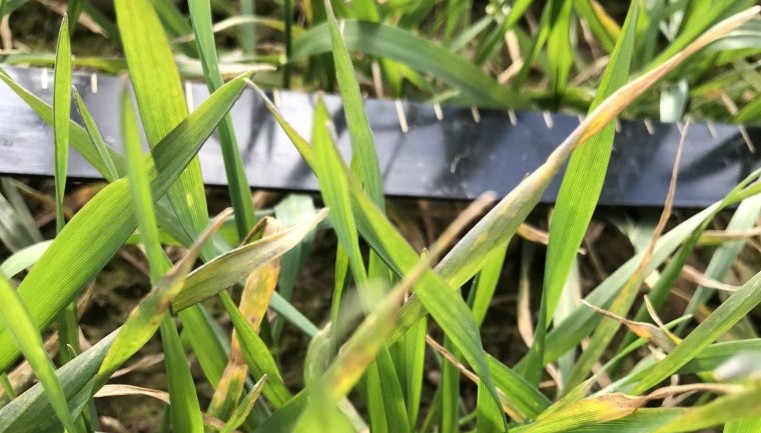Dr David Ellerton, Hutchinsons’ technical development director, highlights some of the disease risks and considers early fungicide strategies designed to maintain yield potential.
Autumn and early winter 2017/18 saw mild temperatures and relatively low amounts of rainfall, but in late winter and early spring this changed with very cold and wet weather across most of England and Wales which led to significant increases in diseases such as septoria. However, from May onwards the weather turned extremely hot and dry across the whole of the UK greatly diminishing the threat.
“Reflecting this lower disease pressure and early senescence in variety trials at Hutchinsons’ Regional Technology Centres, fungicide treatment produced yield increases averaging 1.54 t/ha (17.28%) across all sites and varieties well down on the 2.64 t/ha (28.48 %) of the previous season,” says Dr Ellerton.
However he point out that there were extremely large differences in responses, with varieties such as ‘Reflection’, ‘Santiago’, ‘Costello’, ‘Leeds’, ‘LG Rhythm’ and ‘Gleam’ giving average responses of over 2.0 t/ha, while ‘Shabras’, ‘Grafton’, ‘Sundance’ and ‘Lili’ averaged a smaller response closer to 1.0 t/ha.
“Once again, at our site at Ludlow, where disease pressure was higher, yield responses averaged 2.37 t/ha (20.68%) across all varieties with treated yields averaging a very high 13.83 t/ha.”
2019
This autumn and winter, the weather has been relatively mild and dry until the early part of February and subsequently there has been significant foliar disease development, depending upon drilling date and region, including septoria on lower leaves and some yellow rust and powdery mildew in places.
“Should weather conditions remain conducive to disease development, there is a good chance of early infections this season – particularly with varieties prone to the two main foliar diseases – septoria tritici and yellow rust.”
The latest AHDB Recommended Lists have given up to date information on varietal susceptibility to Septoria tritici. “Of the winter wheat varieties, ‘Elation’, ‘KWS Barrel’, ‘Leeds’, ‘Viscount’, KWS Jackal’, ‘RGT Gravity’ and ‘KWS Kerrin’ are all particularly prone to septoria, with a rating of 5.0 or less and will need to be prioritised for protection at the T0 timing.”
“As far as yellow rust is concerned, varieties such as ‘Myriad’, ‘JB Diego’, ‘Zulu’ and ’Skyfall’ all have ratings of 5 or less and should be closely monitored. However it is important to recognise that mutation of the Yellow Rust may allow it to overcome varietal resistance at a future date.”
De Ellerton advises growers to consult the AHDB Recommended Lists to identify risk of foliar and stem-based diseases.
Controlling Septoria tritici and Yellow Rust
Trial results from Hutchinsons and other organisations have shown the value of early applications of multi-site fungicides such as chlorothalonil, folpet or mancozeb to protect leaves from development of Septoria tritici.
“This is particularly important, as populations of septoria are showing increasing resistance to the SDHI group of fungicides and the reduction in the efficacy of triazoles,” says Dr Ellerton.
“Maintaining disease control in protectant mode is also crucial, considering the relative lack of curative activity from the range of active ingredients available.”
He says that as far as yellow rust is concerned, it is able to survive over winter as dormant mycelium, or as active lesions on green tissue and can survive down to very low temperatures (including freezing), although 10-15°C is optimum for spore production and wind dispersal.
“Growers should be vigilant in checking all wheat crops, and particularly susceptible varieties, for foci of yellow rust infection and treating promptly with an appropriate triazole or stobilurin should the disease be found, even prior to the traditional T0 timing of GS 29/30.”




